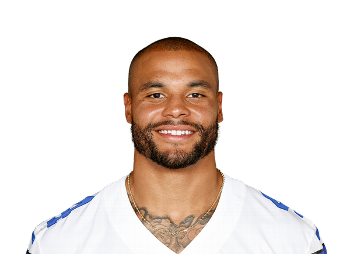Making tough lineup decisions each week can be the most challenging part of the fantasy football process.
The Matchups Map provides a schedule-independent method to evaluate positional matchups each week, rating all 32 opposing defenses in terms of how favorable the matchup is for opposing players at all four skill positions (quarterback, running back, wide receiver and tight end). Instead of relying on seasonal totals, we calibrate points-allowed data to show how each defense fared relative to the difficulty of the schedule it has faced over the most recent five weeks. This provides a fairer approach to judging the quality of individual matchups.
Adj. FPA, or adjusted fantasy points allowed, reflects how many points the defense allows compared with players' weekly averages. A positive number means the matchup is favorable; a negative number means it is unfavorable. Additionally, remember teams often use multiple running backs and wide receivers in a game, and these plus/minus averages cover all of a team's personnel at that position.
All references to fantasy points are for PPR scoring unless otherwise noted.
Quarterbacks
 Matchups highlight: Dak Prescott, Dallas Cowboys (at Philadelphia Eagles). He's in the midst of the softest portion of his 2023 schedule, scoring 24.88 fantasy points against the 30th-ranked-in-Adjusted-FPA (and 32nd for the season) Los Angeles Chargers in Week 6, then 28.06 against the 31st-ranked (24th) Los Angeles Rams in Week 8. Prescott should again be the focal point of the Cowboys' offense against the Eagles, who have already seen Sam Howell score 19.60 (Week 4) and 30.98 fantasy points (Week 8) and Mac Jones score 24.14 (Week 1) against them, especially with the Cowboys' running game struggling and Tony Pollard's matchup suboptimal.
Matchups highlight: Dak Prescott, Dallas Cowboys (at Philadelphia Eagles). He's in the midst of the softest portion of his 2023 schedule, scoring 24.88 fantasy points against the 30th-ranked-in-Adjusted-FPA (and 32nd for the season) Los Angeles Chargers in Week 6, then 28.06 against the 31st-ranked (24th) Los Angeles Rams in Week 8. Prescott should again be the focal point of the Cowboys' offense against the Eagles, who have already seen Sam Howell score 19.60 (Week 4) and 30.98 fantasy points (Week 8) and Mac Jones score 24.14 (Week 1) against them, especially with the Cowboys' running game struggling and Tony Pollard's matchup suboptimal.
Others to like: Jordan Love, Green Bay Packers (vs. Rams); Zach Wilson, New York Jets (vs. Chargers).
 Matchup to avoid: Geno Smith, Seattle Seahawks (at Baltimore Ravens). His per-game fantasy production might be down from his breakthrough 2022, as he's averaging 13.6 points per game after 17.9 last year, yet his 60.7 Total QBR, within range of last year's 62.8, proves that he has been plenty competent in the real game. It's his raw passing stats we care about, however, and a matchup against the tough-as-nails Ravens isn't the matchup from which to expect them. They've afforded quarterbacks the fewest points per passing attempt (0.24).
Matchup to avoid: Geno Smith, Seattle Seahawks (at Baltimore Ravens). His per-game fantasy production might be down from his breakthrough 2022, as he's averaging 13.6 points per game after 17.9 last year, yet his 60.7 Total QBR, within range of last year's 62.8, proves that he has been plenty competent in the real game. It's his raw passing stats we care about, however, and a matchup against the tough-as-nails Ravens isn't the matchup from which to expect them. They've afforded quarterbacks the fewest points per passing attempt (0.24).
Running backs
 Matchups highlight: Darrell Henderson Jr., Rams (at Packers). While there's a danger that, if Matthew Stafford (UCL sprain in thumb) cannot play, the Packers might attempt to stack the box more frequently against Henderson, eight-man fronts haven't historically been an issue for him. Henderson has actually averaged more fantasy points per carry when facing eight-man fronts (0.85) then against all other defenses (0.57) in his career. He'll be more of a focal point against the Packers, who surrendered a combined 40.1 PPR fantasy points to the Denver Broncos' and Minnesota Vikings' backfields the past two weeks.
Matchups highlight: Darrell Henderson Jr., Rams (at Packers). While there's a danger that, if Matthew Stafford (UCL sprain in thumb) cannot play, the Packers might attempt to stack the box more frequently against Henderson, eight-man fronts haven't historically been an issue for him. Henderson has actually averaged more fantasy points per carry when facing eight-man fronts (0.85) then against all other defenses (0.57) in his career. He'll be more of a focal point against the Packers, who surrendered a combined 40.1 PPR fantasy points to the Denver Broncos' and Minnesota Vikings' backfields the past two weeks.
Others to like: Chuba Hubbard, Carolina Panthers (vs. Indianapolis Colts); Breece Hall, Jets (vs. Chargers).
 Matchup to avoid: Aaron Jones, Packers (vs. Rams). His speed has been down noticeably this season; his 17.2% of rushing attempts clocked at 15-plus mph, per Next Gen Stats, a career worst. While some of that could be tied to the hamstring issue that cost him Weeks 2, 3 and 5, that Jones fell short of 10 PPR fantasy points while facing favorable matchups the past two weeks doesn't bode well for this week, where he draws a much stiffer defense. Similarly sluggish Pollard managed only 6.5 PPR fantasy points on 13 targets against the Rams last week.
Matchup to avoid: Aaron Jones, Packers (vs. Rams). His speed has been down noticeably this season; his 17.2% of rushing attempts clocked at 15-plus mph, per Next Gen Stats, a career worst. While some of that could be tied to the hamstring issue that cost him Weeks 2, 3 and 5, that Jones fell short of 10 PPR fantasy points while facing favorable matchups the past two weeks doesn't bode well for this week, where he draws a much stiffer defense. Similarly sluggish Pollard managed only 6.5 PPR fantasy points on 13 targets against the Rams last week.
Wide receivers
 Matchups highlight: Demario Douglas, New England Patriots (vs. Washington Commanders). The most-added wide receiver overnight Wednesday (up 8.6% in rostership that morning alone), Douglas immediately shapes up as a WR3/flex consideration thanks to this supremely favorable matchup. The Commanders have allowed a by-far-most 2.24 PPR fantasy points per target to wide receivers for the season, as well as a tied-for-the-most seven different wideouts to score 20-plus points against them. Douglas led Patriots receivers with a 25% target share in Week 8, and that should now increase with Kendrick Bourne (torn ACL) out for the season.
Matchups highlight: Demario Douglas, New England Patriots (vs. Washington Commanders). The most-added wide receiver overnight Wednesday (up 8.6% in rostership that morning alone), Douglas immediately shapes up as a WR3/flex consideration thanks to this supremely favorable matchup. The Commanders have allowed a by-far-most 2.24 PPR fantasy points per target to wide receivers for the season, as well as a tied-for-the-most seven different wideouts to score 20-plus points against them. Douglas led Patriots receivers with a 25% target share in Week 8, and that should now increase with Kendrick Bourne (torn ACL) out for the season.
Others to like: Brandin Cooks, Cowboys (at Eagles); Rashee Rice, Kansas City Chiefs (vs. Miami Dolphins).
 Matchup to avoid: DJ Moore, Chicago Bears (at New Orleans Saints). While the Saints defense as a whole has represented a plus matchup for opposing wide receivers, they have been particularly tough on opposing WR1s. That can be attributed in large part to cornerback Marshon Lattimore's play, as he has surrendered just 54.1 PPR fantasy points on 165 coverage snaps when the nearest defender to a wide receiver, per Next Gen Stats. WR1s specifically have averaged just 1.5 points per target against the Saints, fifth-worst in the league.
Matchup to avoid: DJ Moore, Chicago Bears (at New Orleans Saints). While the Saints defense as a whole has represented a plus matchup for opposing wide receivers, they have been particularly tough on opposing WR1s. That can be attributed in large part to cornerback Marshon Lattimore's play, as he has surrendered just 54.1 PPR fantasy points on 165 coverage snaps when the nearest defender to a wide receiver, per Next Gen Stats. WR1s specifically have averaged just 1.5 points per target against the Saints, fifth-worst in the league.
Tight ends
 Matchups highlight: Dalton Kincaid, Buffalo Bills (at Cincinnati Bengals). He was excellent as the Bills' only active tight end in Week 8, playing 84% of their offensive snaps, running 32 routes and turning seven targets into 17.5 PPR fantasy points. Kincaid should continue to see a similarly sizable role this week, while facing one of the position's most favorable matchups. The Bengals have afforded a league-high 2.16 PPR fantasy points per target to the position this season and have seen an individual tight end score at least 8.5 points against them in six of seven games.
Matchups highlight: Dalton Kincaid, Buffalo Bills (at Cincinnati Bengals). He was excellent as the Bills' only active tight end in Week 8, playing 84% of their offensive snaps, running 32 routes and turning seven targets into 17.5 PPR fantasy points. Kincaid should continue to see a similarly sizable role this week, while facing one of the position's most favorable matchups. The Bengals have afforded a league-high 2.16 PPR fantasy points per target to the position this season and have seen an individual tight end score at least 8.5 points against them in six of seven games.
 Matchup to avoid: Dalton Schultz, Houston Texans (vs. Tampa Bay Buccaneers). Kincaid's Week 8 success came at the expense of these very Buccaneers, but even accounting for it, they've afforded opposing tight ends 1.37 points per target this season, third-fewest in the league. The Buccaneers have been especially tough in the red zone, limiting all receivers to only 37 yards and one touchdown in those situations, ninth- and second-fewest, with tight ends accounting for only five of the yards and no scores. That's problematic for the touchdown-dependent Schultz, whose six end zone targets are tied for the position's most.
Matchup to avoid: Dalton Schultz, Houston Texans (vs. Tampa Bay Buccaneers). Kincaid's Week 8 success came at the expense of these very Buccaneers, but even accounting for it, they've afforded opposing tight ends 1.37 points per target this season, third-fewest in the league. The Buccaneers have been especially tough in the red zone, limiting all receivers to only 37 yards and one touchdown in those situations, ninth- and second-fewest, with tight ends accounting for only five of the yards and no scores. That's problematic for the touchdown-dependent Schultz, whose six end zone targets are tied for the position's most.
